
Menopause is no fun. As a woman's body goes through significant changes, those changes can be extremely uncomfortable. Everything from mood swings to night sweats and pain can make life miserable for perimenopausal women. Apparently, some are turning to Medical Cannabis for menopause.
A recent online survey from the North American Menopause Society (NAMS) suggests that a significant number of women are using Medical Cannabis as "an adjunct treatment for menopause-related symptoms." The small-scale study involved some 250 perimenopausal and postmenopausal women recruited through targeted advertising.
The nonclinical nature of the study is an inherent weakness, as is the relatively small sample size. Nonetheless, some 86% of the survey respondents reported using Medical Cannabis to treat menopause symptoms. That is a truly remarkable number that cannot be ignored. Though scientists would consider the survey results anecdotal evidence, such evidence still carries weight in the discussion of cannabis efficacy.
We already know that Medical Cannabis helps to alleviate chronic pain. We see it all the time with patients that have been living with chronic pain for years only to find no relief with more traditional treatments. If it can relieve chronic pain, cancer pain, etc., there is no reason to disbelieve women who report that it helps relieve pain associated with menopause.
Furthermore, if pain relief is reported by perimenopausal and postmenopausal women, there is also reason to believe their reports of Medical Cannabis relieving other menopause symptoms. In short, while this recently published study is by no means conclusive, its results do weigh heavily in favor of Medical Cannabis as a valid menopause treatment.
The Cannigma recently published an article discussing the NAMS study. We like their take on it: "As with most things in the cannabis realm, this sort of thing can be pretty individual..."
We couldn't agree more. It doesn't matter whether someone uses Medical Cannabis to alleviate menopause symptoms or take the edge off chronic pain. Different people see different results. Why? Because there are so many factors in play.
When you are medicating with Medical Cannabis, there are many different products you can try. You have plenty of choices in terms of:
What is really important for most patients is finding the right cannabinoid and terpene profile. And for some, there are multiple profiles that offer relief in different ways. As far as delivery method and dosage are concerned, these are not always static.
It is no surprise that the NAMS study showed that the two most popular delivery methods among perimenopausal and postmenopausal women were smoking and edible ingestion. In addition, the two most commonly reported symptoms being treated were sleep disturbances and anxiety/mood issues.
No doubt other delivery methods were used. Likewise, other symptoms were successfully treated. The point is that each of the women choosing to respond to the survey represents an individual who has a unique Medical Cannabis experience.
You are an individual as well. Your Medical Cannabis journey is unique to your condition, your experience, and how your body responds to the medication. What works for you is best for you. Always keep that in the forefront of your mind.
A fair number of women are apparently turning to Medical Cannabis to treat the symptoms of menopause. If you are new to the whole Medical Cannabis thing in Utah, we encourage you to do some research. If you qualify, it might be the alternative medication you have been looking for.
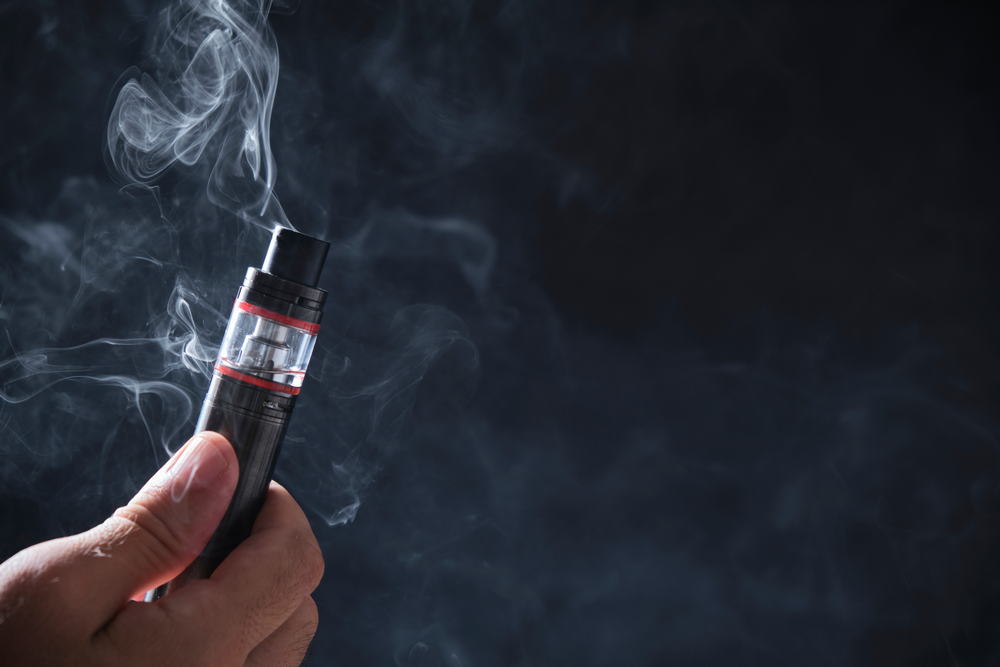
It has been a while since we discussed any of the basic concepts of using THC as a medicine. Given that there are now nearly 70,000 Medical Cannabis card holders in Utah, we thought it might be time to get back to some of those topics. So in this post, we are going to discuss decarboxylation.
Decarboxylation is the process that “activates” cannabis so that users can experience its effects. If cannabis plants don't undergo decarboxylation, they do not offer much help as a medicine. The plant's ingredients are not active in their natural state. And if they aren't active, they are not helping.
Decarboxylation takes inert compounds and makes them active. This can be done in several different ways. The easiest way is to apply heat, which is generally what manufacturers, processors, and actual users do.
When we talk about Medical Cannabis and its benefits for treating chronic pain, PTSD, etc., our conversations often relate to one cannabinoid in particular: THC. Furthermore, we commonly say that cannabis plants contain THC. That's technically not true. The unadulterated compound is actually THC acid (THCA). In its acid form, THC is not nearly potent enough for most medical needs.
To make it potent, THCA needs to be neutralized. This is accomplished by removing the carboxyl group, hence the term “decarboxylation.” When you decarboxylate THCA, you are left with THC. By the way, the same principle applies to CBD and all the other cannabinoids found in cannabis plants.
Smoking Medical Cannabis is prohibited in Utah. Even so, combustion does the trick. The high heat of combustion decarboxylates THCA quickly and effectively while the user gets the maximum amount of THC into the bloodstream right away, through inhalation. But since smoking is not allowed in the Beehive State, we need to do decarboxylation in other ways.
With an active Medical Cannabis card, you can visit a licensed Utah dispensary and purchase raw flower. You can place that flower in a dry herb vaporizer for consumption. The vaporizer applies enough heat to release the plant's active compounds – decarboxylated, of course – without actually burning the material. Therefore, you are not inhaling toxic smoke.
If you're not into dry heating, you can purchase Medical Cannabis products containing THC. Processors add THC to their products after extracting it from plant material and decarboxylating it. Decarboxylation may be accomplished using chemicals, but normally it's accomplished through heating cannabis crude oil.
Cannabis crude oil is the pure liquid extracted from cannabis plant material. It is distilled using a combination of heat and pressure to separate cannabis compounds by weight. The same heat and pressure that separates CBD from THC, for example, also decarboxylates both.
One last thing that might interest you is this: you can decarboxylate at home if you purchase raw flower from a Medical Cannabis pharmacy. Why would you want to do so? One common reason is to make cannabis-infused butter or oil for use in baking.
The easiest way to decarboxylate at home is to simply slow cook the plant material over the stove. We will not get into details here, but there are lots of tutorials online. There are also some appliances that can automate the process.
Decarboxylation is what makes inactive cannabinoid acids active. It is the secret to turning freshly harvested cannabis into a medical product. Without decarboxylation, Medical Cannabis would not be very effective for medicinal purposes. But with decarboxylation, cannabis plant material becomes incredibly valuable. And now you know.
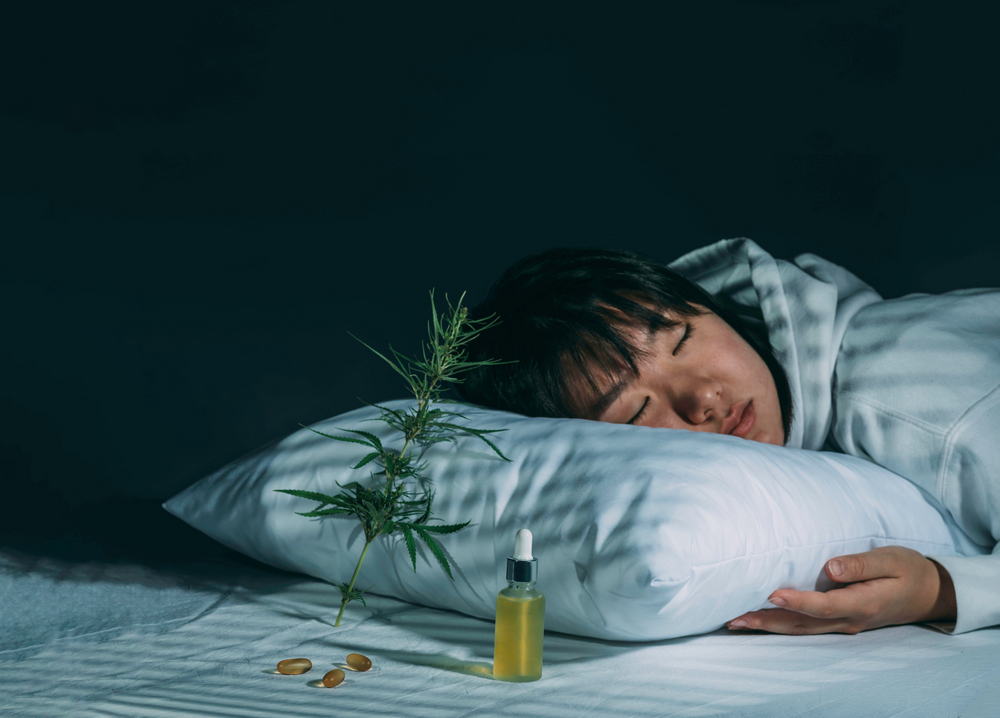
CBN, also known as cannabinol, is often marketed as the “sleep cannabinoid” or its purported ability to encourage better sleep. We say “purported” because there isn't a ton of clinical data supporting the idea. Anecdotal data abounds, but that's not enough to make scientific claims. One of the most convincing anecdotal studies was conducted in 2021, and it suggests CBN really might be the sleep cannabinoid people say it is.
As you might already know, there are over 100 naturally occurring cannabinoids found in cannabis plants. CBN is just one of them. CBN is a cannabinoid that actually comes from THC degradation. It is often extracted from older plants or biomass that hasn't been stored properly. As for its purported ability to enhance sleep, we're thinking that how it interacts with the CB2 receptor has something to do with it.
The previously mentioned 2021 study enrolled 388 participants between the ages of 18 and 80. The majority of the patients had never used CBN before. Most were women, but that isn't surprising given the fact that females are more likely to experience sleep problems than males.
It should be noted that the study was conducted as a joint effort between CBDistillery and a software company known as MoreBetter. It was divided into three sections: enrollment, a week without CBN, and three weeks during which CBN was taken nightly. Participants were asked survey questions every morning and the results were compiled. Here's what they showed:
The numbers look like a win to us. CBN was apparently a highly effective sleep aid for the majority of the study participants. Despite the study itself not being clinical in nature, it is hard to ignore the responses participants provided. CBN was clearly working for them.
Although insomnia and other sleep issues are not directly listed as qualifying conditions under state law, a lot of people who use Medical Cannabis experience sleep problems as one of the symptoms of their conditions. For example, PTSD patients commonly complain of insomnia. PTSD is a qualifying condition in Utah.
If you are a current patient and sleep problems are part of your daily experience, you might want to talk with your QMP or PMP about CBN. It could be the key to helping you sleep better. As a bonus, if you can improve your sleep, there is a possibility that some of your other symptoms will improve as well.
As always, be sure to track all your Medical Cannabis consumption. You especially want to track whenever you try something new. Tracking CBN consumption would definitely tell you whether it's helping you sleep. And if it is, making CBN part of your daily routine could obviously help a lot.
It is always good to read studies like the one conducted on CBN in 2021. The team here at Utahmarijuana.org firmly believes in the power of cannabis as a medicine. We have seen countless patients go on to lead better lives after getting their Medical Cannabis cards. We know there is a lot of potential, and studies are proving it.
CBN as a sleep aid is just one example. Thanks to research data, we have even more reasons to promote it as the sleep cannabinoid.

Utah's Medical Cannabis program has come a long way in just a few short years. It is still not perfect, but what an improvement we've seen since the program was first launched. Are you generally happy with the way things are right now? A survey conducted by the state late last year indicates most patients are.
It's easy to be dissatisfied with certain aspects of Utah's Medical Cannabis program. So we are encouraged to see such positive data from the state survey. It shows that we are definitely moving in the right direction. It demonstrates that most patients are being well served. We think that this is good.
Below are five questions from the survey along with our summaries of the responses. The data really is encouraging.
Note that all the questions on the survey asked participants to choose one of five responses ranging from 'strongly disagree' to 'strongly agree'. On the question of pharmacies consistently having the medicine patients need, 61% combined to either agree or strongly agree.
This particular statistic is important in light of the fact that the industry talks a lot about access challenges. Those challenges are real, but the majority of patients are finding the Medical Cannabis products they need when they visit their local pharmacies.
Quality is always a concern when consumers buy things. Perhaps it's a greater concern when you're talking medicine. Fortunately, 78% of the roughly 8,900 survey respondents are happy with the quality they get from their pharmacies. Quality really does matter in the Medical Cannabis world. High quality products just work better.
Quality is important, but Medical Cannabis is such that people also need access to a variety of products and delivery methods. Survey data suggests that Utah's pharmacies are delivering. Approximately 57% of the survey respondents are happy with the variety they have access to.
Next up, the survey asked patients whether they regularly need to alter their medications to get the dose they need. Surprisingly, 72% either disagreed or strongly disagreed with that statement. It would appear as though patients are able to use their medicines off-the-shelf without any dosage modifications necessary.
We are guessing this could be largely related to education among patients, QMPs, and PMPs. The more we learn about cannabis as a medicine, the more we understand how to use it effectively. The fact that so many patients don't feel they have to alter their medicines indicates we're on the right track.
Finally, 68% of Utah's Medical Cannabis patients say they are happy with the access they have through local pharmacies and home delivery service. This is definitely good stuff. We aren't sure if the number would be so high were home delivery not available in the state. But now that it is, patients located virtually anywhere in Utah can have their medicine delivered.
If you are a current patient, we trust your experience has been good so far. Both the industry and state regulators have been working diligently over the last several years to make the program as good as it can be.
If you aren't a patient but think you might qualify, we invite you to make an appointment with a QMP at any one of our clinics. We can help you obtain your Medical Cannabis Card and get you started on your journey to feeling better.
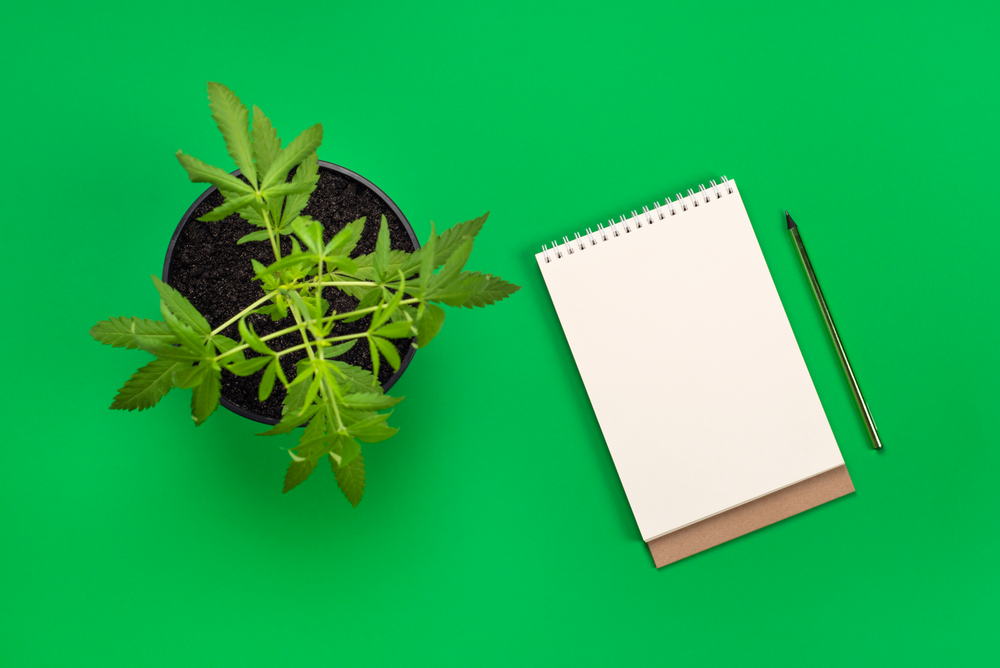
Tracking Medical Cannabis consumption is a good idea. It is something we routinely recommend to patients after helping them get their Medical Cannabis Cards. As for how many actually take our advice, we don't know. Every patient would track consumption in a perfect world.
How about you? Do you follow the state's recommendation to write down the details every time you use Medical cannabis? If not, you really should start. But don't just take our word on tracking cannabis use. Listen to your peers. And if you don't know anyone else who uses Medical Cannabis, we can refer you to a post that recently showed up on the Cannigma website.
The post was written by Cannigma regular Jessica Reilly. In her opening remarks, Reilly commented about how she really had no clue what she was doing when she first began her cannabis journey. Like so many others, the early stages of her journey were defined by trial and error. She went on to say that she wished she had "been better about tracking [her] cannabis experiences at the start."
One of the first things she discovered is that she barely knew the difference between indica and sativa. Anybody who has been on the journey for any length of time knows that indica and sativa are where it all starts. If you don't know the differences between the two cannabis types then it is pretty hard to make decisions about what you're going to use.
Another thing Reilly was unfamiliar with are the many different cannabinoids naturally occurring in cannabis plants. In a Medical Cannabis setting, the main cannabinoid everyone is after is THC. Still, some medical conditions are better treated with CBD. Even combining the two cannabinoids is appropriate for some people.
Did you know that there are over 100 naturally occurring cannabinoids? Did you know that some Medical Cannabis products contain more than one? These are all things people new to the Medical Cannabis journey need to learn over time.
Reilly was even surprised to learn about terpenes and how they affect the cannabis experience. Terpenes are those compounds found in plant life that produce the unique odors our noses recognize. Lemon has a specific odor, for example. We identify that odor by the easily recognized terpenes the tree produces.
Terpenes can actually impact how a Medical Cannabis product performs. You may react one way to certain terpenes while someone else reacts just the opposite. Just the difference in one or two terpenes can affect how well a particular medicine works for you.
By now you might be wondering what any of this has to do with tracking consumption. Here's the deal: the point of tracking is to create a record of every Medical Cannabis product you use and how it makes you feel. Tracking is a lot like budgeting. By keeping a written record, you can easily see what works and what doesn't. You can start seeing patterns develop. From there, you can make better decisions about how to use Medical Cannabis.
We recommend tracking everything and then sharing the information with your QMP and PMP. Both medical professionals can help you make sense of the data. They can better advise you on everything from delivery method to dosage.
Tracking consumption is essentially a tool to help you get the most out of Medical Cannabis. But don't take our word for it. Ask friends or family members who have already been on the journey for a while. Chances are they will recommend tracking, too.

Telemedicine and Medical Cannabis are similar in a lot of ways. Both have been around for an awfully long time but were not widely accepted until recently. How ironic. At any rate, we hear from a lot of new patients who wonder if their initial medical provider visit can be conducted virtually. The simple answer is “no.” But let us unpack that.
The short explanation is this: all initial visits, which is to say visits designed to get that first Medical Cannabis recommendation, must be in-person visits. Follow up visits for card renewal can be virtual if they are conducted with the same medical provider. Simple enough. Now, let us look at the details.
Utah's Medical Cannabis law spells out what we just described. But apparently, there was some confusion about the policy. So much so that the state sent out a bulletin in 2022 clarifying the statute. In that bulletin, they reiterated the need for initial visits to be in-person visits.
The bulletin went even further to clarify what an in-person visit was. According to the law, an in-person visit is defined as medical provider and patient meeting in the same location, in the same room, and face-to-face. This precludes any sort of telemedicine visit the first time around.
This policy applies to both Qualified Medical Providers (QMPs) and Limited Medical Providers (LMPs). So here it is as simply as we can state it: patients must meet face-to-face with their medical providers, in the same physical location, in order to get the initial recommendation for Medical Cannabis.
Fortunately, the law recognizes that requiring periodic visits for Medical Cannabis card renewal does put an additional burden on patients. Therefore, patients are allowed to meet with their medical providers virtually at renewal time. There is one caveat though: a patient must meet with the same provider who made the original Medical Cannabis recommendation.
If a patient chooses to visit with a different QMP or LMP at card renewal time, that visit must be in-person. The new medical provider is required to conduct the same thorough examination and review of the patient's medical history. That needs to be done face-to-face so that the medical provider can confirm both diagnosis and the recommendation of Medical Cannabis as an appropriate treatment.
We want to close out this post by reminding you that you have many options in terms of medical providers. When the Utah Medical Cannabis program was first launched a few years back, only QMPs could make recommendations. Only QMPs could help patients obtain their first Medical Cannabis cards.
Shortly into the program, it became abundantly clear that there simply weren't enough QMPs to meet the demand. The difficulty in meeting with a QMP was exacerbated in rural areas where there were none to be found. So the legislature got to work and approved the LMP program.
The LMP program invites nearly every medical provider with prescribing authority in the state of Utah to participate. What does this mean to you, practically speaking? If you are unable to visit with a QMP in your local area for any reason, your family doctor or GP can act as your medical provider under the LMP program.
Just remember that your initial medical provider visit needs to be in-person. Your medical provider will evaluate your current health, look at your past health history, and ask you plenty of questions. Provided your qualifying condition is appropriately treated with Medical Cannabis, you should have no trouble obtaining your card.
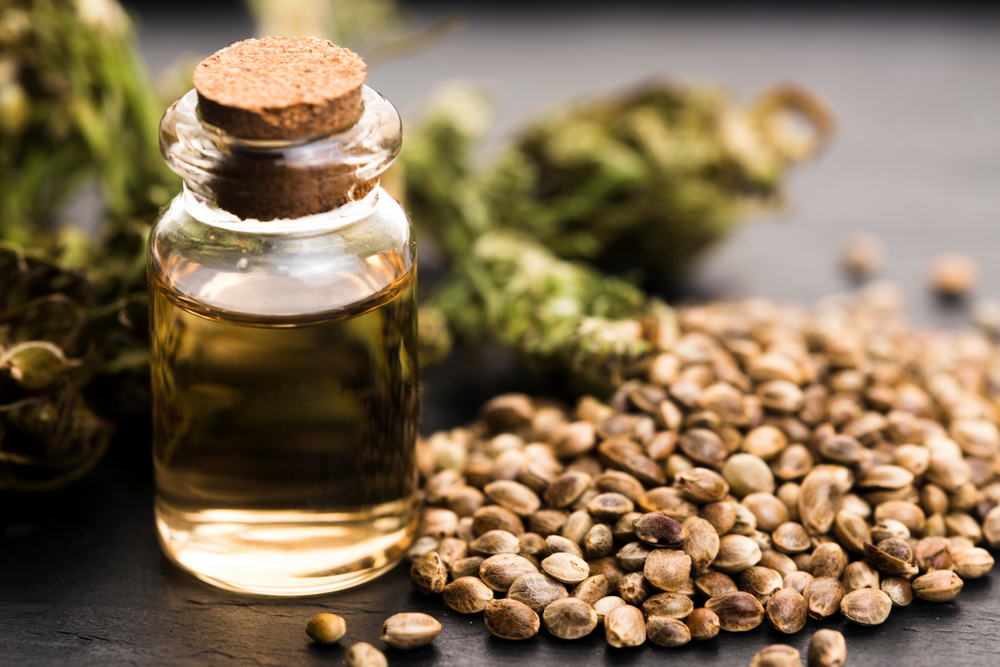
Utah voters approved Proposition 2 to legalize Medical Cannabis in 2018. Our program was set in motion the following year. Since 2019, the number of Medical Cannabis users in Utah has continued to climb. So have the number of Qualified Medical Providers (QMPs). Overall, though, has cannabis consumption changed significantly in the last few years?
We know it has changed here in Utah simply because our program continues to evolve as lawmakers and regulators make adjustments. It would be curious to see how much evolution has taken place outside of the Beehive State. Common sense seems to dictate a lot of changes, but no one can say for sure without hard data.
Back in 2021, The Cannigma conducted their own survey designed to help them understand how recreational users saw themselves in relation to broader public opinion and policy. We will not get into all the details here. However, we are interested in what the survey revealed about Medical Cannabis.
The survey pulled in results from 204 female users and 162 male users. That gives us a total of 366 respondents. Of that number, 65% said they used cannabis as a substitute for other prescription medications. That in itself is rather interesting. Knowing what we know about chronic pain being the number one qualifying condition among Medical Cannabis users, we can speculate about the prescription medications users are hoping to avoid.
We also find it fascinating that 72% of the females reported using Medical Cannabis instead of prescription drugs while only 55.5% of the males reported the same thing. The disparity deserves a bit more investigation. Maybe future research will look into it.
One last thing we wanted to touch on is the fact that the survey revealed medical users reported more frequent cannabis consumption. Medical Cannabis users are more likely to use multiple times per day and on more days per week. No surprises there.
By its nature, Medical Cannabis is used a lot like most other prescription medications. Since its effects tend to wear off after a few hours, patients often consume cannabis multiple times per day. We expect, for most patients, this pattern of consumption to be consistent throughout any given week.
The one thing that makes this interesting is the fact that, when all is said and done, actual cannabis consumption is left to patients. Medical providers make recommendations. They offer sound advice. But when it comes time to actually medicate, individual patients determine delivery method, dosage, and frequency. Yet even without a written prescription with formal instructions printed on a label, patients still use Medical Cannabis like any other prescription medication.
Though we haven't seen any sort of follow-up survey similar to the Cannigma survey from 2021, there is no reason to believe that Medical Cannabis users are doing things any differently in 2023. We think it's safe to assume that patients still use their medicines on a daily basis, and probably multiple times per day.
What may have changed over the last two years is this percentage of consumers who use Medical Cannabis in lieu of prescription medications. We suspect that number might be higher, though we don't have any clear data to prove it.
As things in the Medical Cannabis space continue to evolve, both medical providers and patients continue to learn. Most of what we learn is fresh and exciting. It is information that helps us all make better use of Medical Cannabis to improve health, wellbeing, and quality of life.
How can you find high-quality cannabis products in an unregulated market? How do you make sure that they are safe, effective, and meet your expectations?
People ask me about this all the time and, unfortunately, there is not a simple answer. The reality is, in an unregulated market there are a lot of unsophisticated producers who are making all kinds of products simply to make money. These producers probably care very little about whether their product is healthy or not.
It would be the same as if somebody were making bathroom gin, or breakfast cereal in their basement, or something along those lines. It may taste fine, it may even give you some of the qualities of the thing you're looking for, but you don't really know what went into making it. These are some general rules of thumb to look for.

All products should have a certificate of analysis (COA). Even if you buy cannabis on the black market, you should still want some kind of testing on the product. If you’re using an untested cannabis product, how can you be sure it’s free of pesticides that cause cancer? If somebody says they don't have to use any intervention at all to produce a perfect product, that's a lie.
Reputable producers of high-quality cannabis will always have COAs available for each of their products. You can often find COAs via a web address or QR code on their packaging. If a cannabis producer doesn't have COAs readily available, you might want to buy a different brand.
Certificates of analysis often have complicated, detailed information about the products they represent. Different states have different regulations for testing cannabis, and some are much more stringent than others.
So, what are some of the things to look for in a COA? First, look for a section that lists the cannabinoids. We typically find anywhere between 12 and 16 different cannabinoids in a plant. These include THC, CBC, CBDA, CBDV, THCV, CBL, CBT, CBE, etc. Does the COA list all the cannabinoids found in the test, even if they only show up in trace amounts?
Non-naturally occurring cannabinoids, like Delta-6-THC and Delta-10-THC, indicate the product contains cannabinoids created in a lab, through a synthetic process. Synthetic cannabinoids and the methods used to make them have not been thoroughly tested.
None of them have any data to suggest that they're good. They may not have data to suggest they're bad, but that's a real significant risk if you're putting your health on the line. So, I recommend avoiding products with cannabinoids that are not naturally occurring.
The second thing to look for is where the flower came from. If you're using a product that was derived from flower, the manufacturer’s COA should say what was in the flower. The COA should also have information on where the flower came from.
If the cannabinoids in your product do not match the cannabinoids that were found in the flower, that's a big warning sign. That means they either have an uncontrolled process, the product actually did not come from the stated location, or they created things synthetically in their process. That's a red flag.
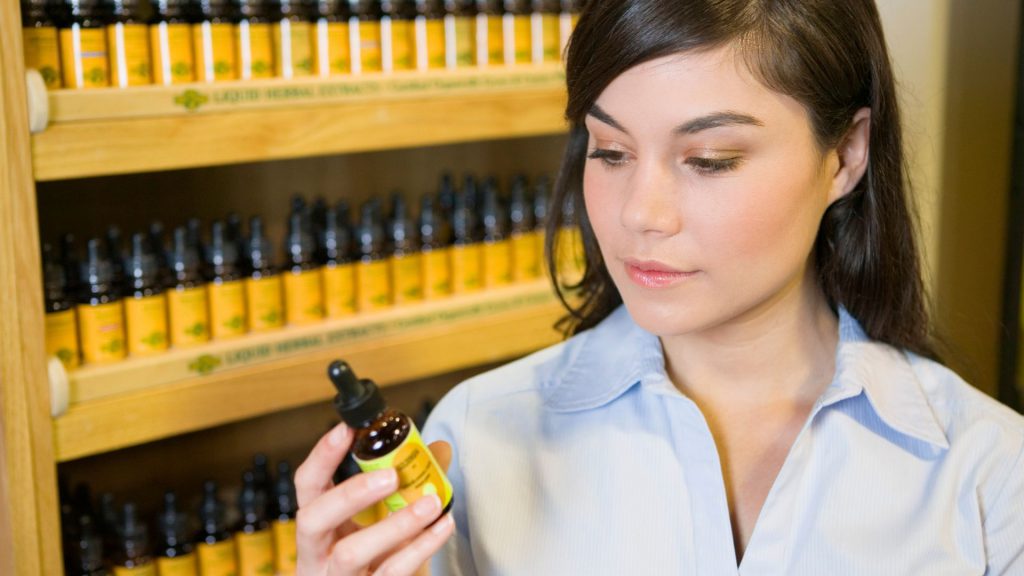
The third thing to look for is the total concentrations of the product. For CBD products, you typically need at least 25 milligrams to be an efficacious dose for an average person. So, I recommend checking the bottle for the amount of CBD and other cannabinoids per serving. If I buy a bottle and the total amount of CBD in the entire bottle is 300-600 milligrams, chances are there’s not enough cannabinoids to actually have an effect.
Next, consider the effects that you expect to get from the cannabis product you’re buying. If I'm trying to have a head change and the product contains no THC, then it will not give me that desired effect. Similarly, if I'm really looking to lower inflammation and the product does not contain any CBG, it is unlikely to produce the effect that I'm looking for.
High-quality cannabis comes from sources that are transparent about their processes, their COAs, and everything about their production. In general, we can expect good products from cannabis producers who are transparent about their production methods.
If they’re willing to show you how their products are made, it’s a good sign that they have nothing to hide. If everything is a trade secret or hidden, that is also probably a warning sign that they do not have full control of their process.
You might be wondering: how do I know what every cannabinoid does? Which ones are natural, which ones are not, and which ones are right for me? I recommend taking the time to learn about common cannabinoids and the effects they can produce. Once you've done that, cannabis COAs will begin to make a lot more sense.
There are a lot of different sources of information on cannabinoids and their different effects. You can learn about them in books about Medical Cannabis, peer-reviewed studies, and other sources backed by scientific research. This website is a good source of information, and so is the Discover Marijuana YouTube channel.
Zion Medicinal CEO Blake Smith is giving you an insider’s perspective about Medical Cannabis in this limited feature series, “Between Two Herbs.” Keep an eye out for Blake’s next piece.

One of the benefits of state-legal Medical Cannabis is all the anecdotal evidence cited by people who come to the realization that cannabis helps them feel better in ways that were never intended. As a result of this evidence, we hear all sorts of questions about what the drug can and cannot be used to treat. Let’s consider menopause night sweats, for example.
A 2020 survey conducted by the North American Menopause Society (NAMS) seems to suggest that women are using cannabis to self-treat the symptoms of menopause. The study surveyed 232 California women between the ages of 45 and 64 who had enrolled in VA plans in the Golden State.
More on that study in just a minute. First though, it is important to note that we don't have any comprehensive clinical studies on this particular topic. In fact, we have very little study data on anything relating to menopause symptoms and the endocannabinoid system.
What we do know is that the endocannabinoid system is a multi-functional system. It directly regulates, or indirectly helps to regulate, a long list of biological functions. It is believed that the endocannabinoid system does play a role in regulating a person's internal thermostat.
If that is truly the case, it would stand to reason that night sweats caused by menopause could be controlled through some sort of endocannabinoid manipulation. But right now, that's just a theory. Like so many other potential treatment areas, using Medical Cannabis to treat menopause hot flashes needs a lot more study.
Getting back to the previously mentioned study, more than half of the women surveyed reported menopausal symptoms they found bothersome. They mentioned hot flashes and night sweats at a rate of 54%. In addition, 27% complained of insomnia and 69% complained of genitourinary problems.
When asked how they treated their menopause symptoms, 27% reported having used cannabis at one time or another. Survey participants were not asked how frequently they used cannabis or the amount they used.
More interesting was the fact that only 19% reported using traditional menopause therapies. Hormone therapy immediately comes to mind. Yet 10% reported an interest in giving cannabis a try at some point in the future. This tells us something particularly important.
What it tells us is that traditional menopause therapies do not always work. But that's no different from any other medical therapy. Medical science develops therapies to treat all sorts of diseases, maladies, and conditions. But every medical professional knows that people respond differently to those therapies. A single therapy doesn't work for every patient. No therapy is foolproof.
It is entirely possible that the majority of the women in the California study who reported treating with cannabis actually found relief in doing so. It's also possible that some found relief while others didn't. We just don't know.
Here in Utah, our list of qualifying conditions for Medical Cannabis is pretty straightforward. Most of the patients who apply for Medical Cannabis cards in our state list chronic pain as their chief complaint. But there are also patients who use Medical Cannabis to treat:
At this time, we do not have enough data to say one way or the other if Medical Cannabis would be an appropriate treatment for menopause night sweats. One day we may have that answer. For now, though, we encourage you to discuss your health with a medical provider if you believe you qualify for a Medical Cannabis card in Utah.